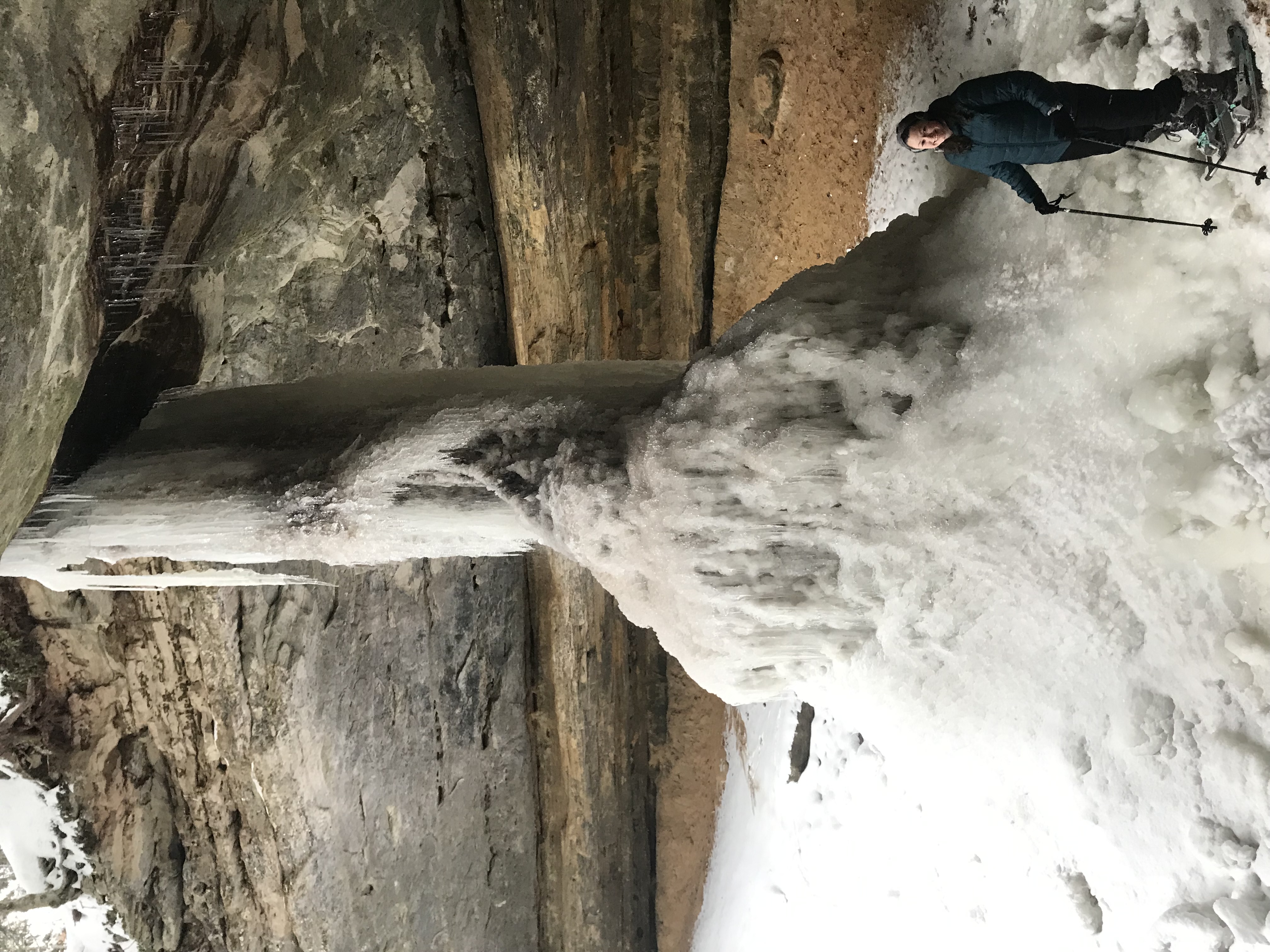Becoming a Yooper: Learning to snowshoe
Extension educator’s first Upper Peninsula winter offers exciting new opportunities.

“No, I am not a native to Michigan. No, I have never visited Michigan’s Upper Peninsula (U.P.) for a family vacation. My first time in the U.P. was this past summer!” I find myself saying this as I settle into my new job with Michigan State University Extension and Michigan Sea Grant located in the Houghton/Hancock area.
![]()
As an Extension educator, I want to learn about my community and its culture to help address concerns about the Great Lakes. So, I decided to write about my personal experiences with “becoming a Yooper.” First, what is a Yooper (like U.P.-er; pronounced as yü-per)? A Yooper is a nickname given to a resident of the U.P. of Michigan. Starting as a regional term, the word Yooper was finally added to the Merriam-Webster dictionary in 2014. So, I am technically a Yooper already, but I think there is more about becoming a Yooper.
Deep, deep snow
Yoopers seem to have some common experiences, including trekking across the land on snowshoes. Snowshoeing is a form of hiking, but in deep snow. The snowshoe has been designed so that your weight is dispersed, so you only sink into the snow a few inches. Thus, if the snow is waist deep or more, you can still walk relatively easily. Snowshoes are great to go exploring through the woods, visiting frozen waterfalls, or for hiking to a fishing or hunting camp. I use them to explore new U.P. trails with my dog.
If someone asked me to draw a snowshoe before I moved to the U.P., I would have drawn tennis rackets. However, I have learned that there are many types of snowshoes based on use. Generally, modern models are smaller and made of aluminum, while traditional snowshoes are elongated and have the netting that has the “tennis racket” look. Typically, the traditional pair, such as Iverson, allows for a quieter excursion while the modern pairs, such as Tubbs, can grip for a more extreme terrain.
According to Skiing, Snowboarding, and Snowshoeing by Tim Stotte, the oldest snowshoes were dated between 3800-3700 BC and found in the Dolomites mountain range in Italy. In 2016, a survey by the Outdoor Industry Association found that approximately 3.5 million Americans above the age of 6 participated in snowshoeing. Snowshoes are made for young kids and adults, so it is a fun and relatively inexpensive activity to get the family outside throughout the long U.P. winters.
 Hard-water fishing?
Hard-water fishing?
“Have you gone hard-water (ice) fishing yet?” I’m asked. But no, I have not gone … yet. This is surprising to my family and friends, but I have to say, the investment in ice-fishing in a new place can be pricey. I plan to go ice-fishing, but for now, I have invested in snowshoeing.
Snowshoes can cost from around $50 to over a couple hundred dollars depending on what you will use them for and the user weight (total weight of user plus what they are carrying); I bought a nice pair for $130. A local second-hand sports store is a good place to start. So, if I was to grow up in the U.P., snowshoeing would have been most likely one of the first outdoor activities. I am happy to say that I am starting the process of becoming a Yooper!
Michigan Sea Grant helps to foster economic growth and protect Michigan’s coastal, Great Lakes resources through education, research and outreach. A collaborative effort of the University of Michigan and Michigan State University and its MSU Extension, Michigan Sea Grant is part of the NOAA-National Sea Grant network of 34 university-based programs.
This article was prepared by Extension educator Lauren N. Jescovitch under award NA14OAR4170070 from the National Oceanic and Atmospheric Administration, U.S. Department of Commerce through the Regents of the University of Michigan. The statements, findings, conclusions, and recommendations are those of the author(s) and do not necessarily reflect the views of the National Oceanic and Atmospheric Administration, the Department of Commerce, or the Regents of the University of Michigan.



 Print
Print Email
Email

